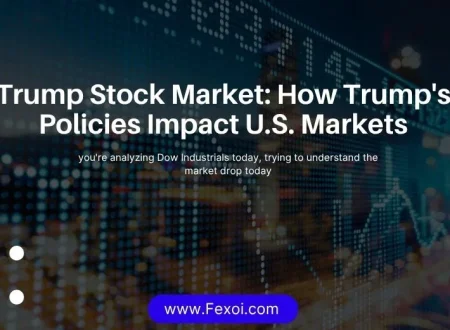Are we in a bull market? If you’ve been tracking the recent market momentum, you’ve likely noticed major indexes rebounding strongly. But does this rally truly signal a bull market or is it just a short-lived recovery in disguise? Understanding where we stand in the market cycle can help investors make informed decisions, reduce risk, and capitalize on opportunities.
This guide will answer the pressing question: are we in a bull or bear market, explore the signals that define each, and offer practical strategies for navigating the current environment.
What Is a Bull Market?
A bull market is a period when stock prices rise by 20% or more from recent lows, typically fueled by investor confidence, economic growth, and positive earnings reports.
Key Characteristics of a Bull Market:
- Price Growth: Sustained 20%+ rise in key indexes (e.g., S&P 500)
- Positive Sentiment: Investors are optimistic about future returns
- Strong Economic Data: Rising GDP, job growth, and consumer spending
- Higher Corporate Earnings: Improved profitability across industries
These traits often occur before the public fully realizes the economy has entered a new growth phase.
Are We in a Bull or Bear Market Right Now?
Yes, based on technical definitions, we are currently in a bull market. The S&P 500 has surged over 20% from its October 2023 low, supported by cooling inflation and improved investor confidence. Similarly, the Nasdaq and Dow Jones Industrial Average are showing consistent growth trends.
According to Morgan Stanley’s 2025 Q2 Outlook, key indicators like earnings growth and capital spending align with early bull market phases.
That said, some caution remains. Not all sectors are rebounding equally, and geopolitical tensions or abrupt interest rate changes could disrupt the trajectory.
Bull Market vs. Bear Market: How to Tell the Difference
When assessing whether we’re in a bull or bear market, consider the following:
- Factor Bull Market Bear Market
- Market Direction Upward trend with a 20%+ increase from recent lows Downward trend with a 20%+ decline from recent highs
- Investor Sentiment Generally optimistic and confident Typically fearful or cautious
- Economic Conditions Strong growth, rising GDP, and low unemployment Economic slowdown, rising unemployment, or recession
- Leading Sectors High-growth industries like tech and consumer goods Defensive areas such as utilities, healthcare, or gold
- Risk Tolerance Increased willingness to take risks Preference for safety and capital preservation
Knowing which phase we’re in helps adjust your portfolio strategy accordingly.
Signs We’re in a Bull Market
To determine whether the market is in a bull phase, look for these signals:
Sustained Uptrend in Major Indexes
The S&P 500 and Nasdaq have crossed critical technical resistance levels, signaling strength.
Improving Corporate Earnings
- Companies across tech, healthcare, and industrials are beating earnings estimates.Robust Economic Indicators
Consumer spending, wage growth, and industrial production are rising.
Investor Optimism
Surveys show a shift in sentiment from fear to *”buy the dip” confidence.
“Market recoveries often begin in darkness, when few believe in them. By the time it’s obvious, the gains are already made,” says Liz Ann Sonders, Chief Investment Strategist at Charles Schwab.
How Investors Should Respond During a Bull Market
A bull market offers fertile ground for returns—but strategy matters. Here are practical steps:
1. Review and Rebalance Your Portfolio
- Allocate more to growth sectors like tech, AI, and renewable energy.
- Reconsider how much risk you’re comfortable with and adjust your portfolio to match.
2. Don’t Chase Returns
Avoid FOMO investing. Stick to long-term financial goals.
3. Set Stop-Loss and Take-Profit Levels
Protect gains by automating risk control measures.
4. Focus on Fundamentals
Invest in companies with solid earnings, manageable debt, and strong competitive advantages.
5. Diversify Strategically
Include international markets, real estate, or commodities to reduce exposure to U.S. market volatility.
Credible Data Supporting the Bull Case
According to Statista, the S&P 500 gained over 15% year-over-year as of June 2025.
Harvard Business Review notes that investor optimism increases disproportionately when inflation cools alongside job growth—two current realities.
Together, these data points strengthen the bull market thesis.
FAQs- Are we in a Bull Market?
1. What officially defines a bull market?
A bull market occurs when major stock indexes rise by more than 20% from their most recent lows. It’s usually driven by solid economic expansion, higher corporate earnings, and growing investor optimism.
2. Are we currently in a bull or bear market in 2025?
We are in a bull market as of mid-2025, confirmed by strong market performance, earnings growth, and positive investor sentiment.
3. How long do bull markets typically last?
Historically, bull markets last 5–7 years on average. The longest in U.S. history (2009–2020) spanned over a decade.
4. Is investing during a bull market a smart move?
Bull markets present good opportunities, but risk management is key. Invest wisely, diversify, and avoid hype-driven decisions.
Final Thoughts
Yes, we’re in a bull market but that doesn’t mean risk is off the table. Use this opportunity to refine your strategy, align with long-term goals, and stay disciplined. The smartest investors prepare during optimism, not panic.
Written by Faizan Rasool, a journalist passionate about delivering clear, helpful content in real estate, finance, tech, and lifestyle.







